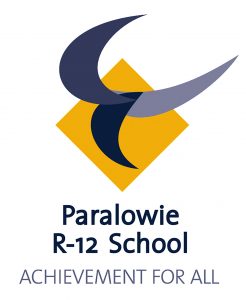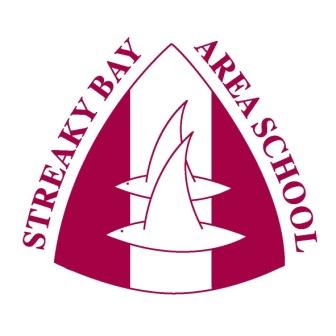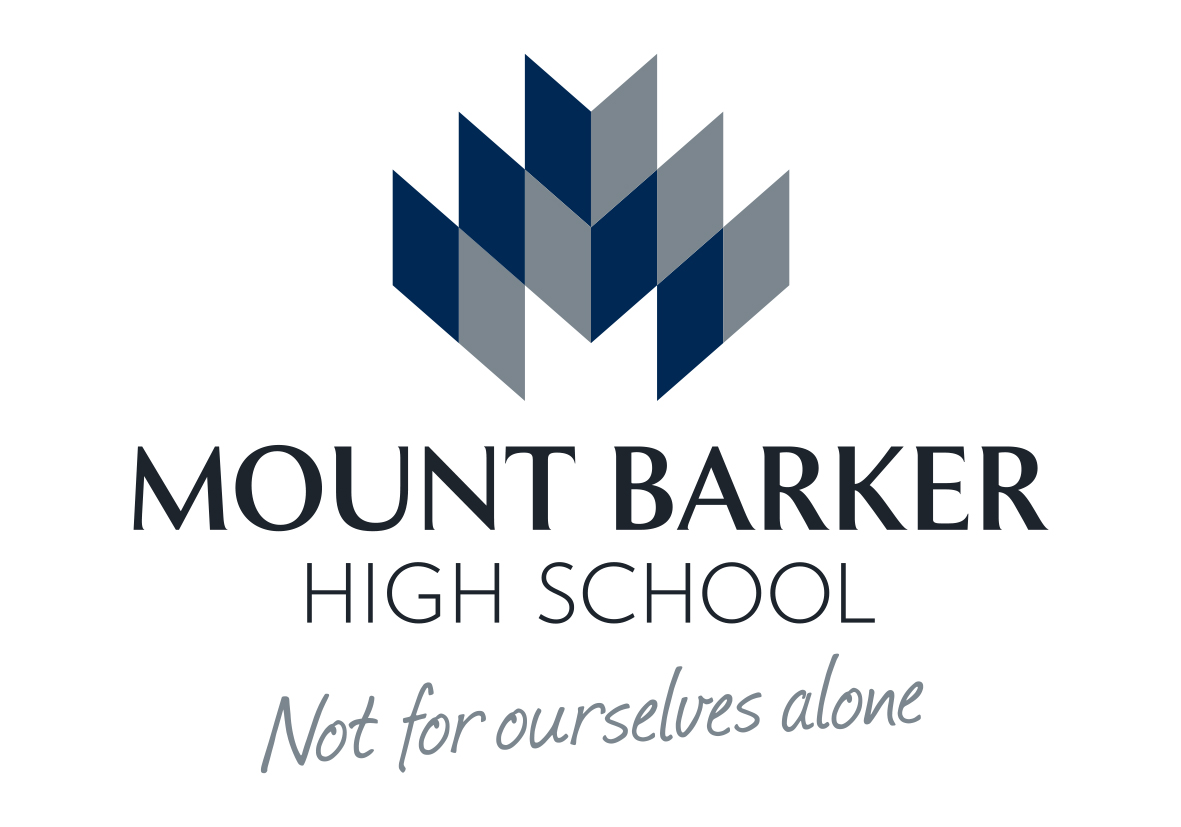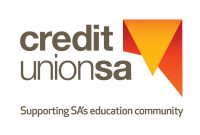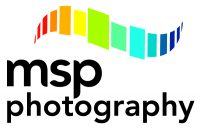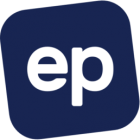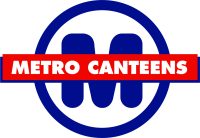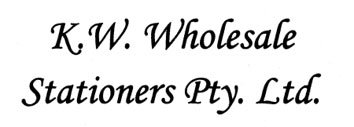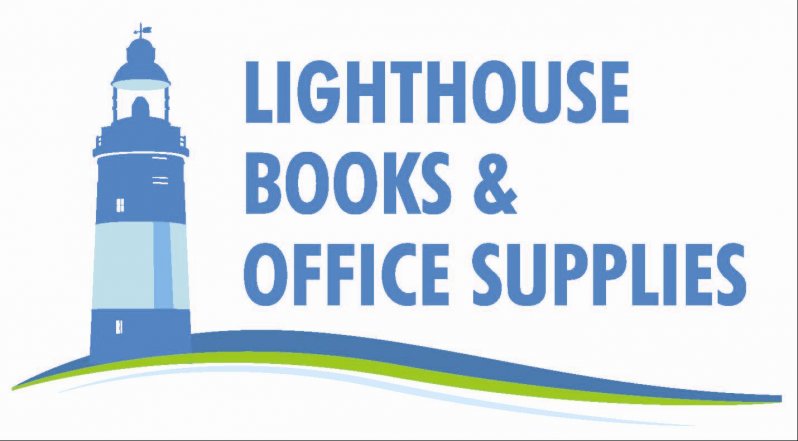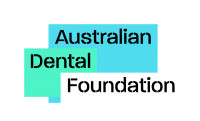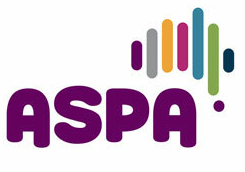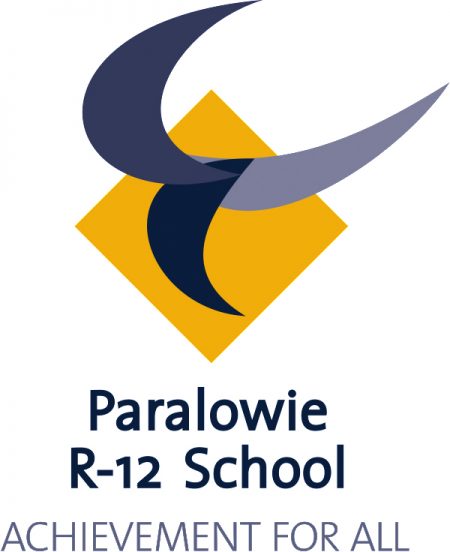
Paralowie and the pursuit of Equity
28th June 2018
Paralowie R-12 and the pursuit of Equity, where Equity is one of the 6 ‘characteristics of public education’.
In 2017, the Public Education Advisory Committee (PEAC) produced … a statement on public education, articulating and affirming the key characteristics of public education. The statement was endorsed by the Minister and Chief Executive and is intended to shape planning and policy at both the corporate and local level.
The 6 characteristics of public education that the PEAC identified were:
Quality
Equity
Diversity and cohesion
Collaboration and trust
Community
Democracy
and specifically in relation to the characteristic of Equity, the PEAC declared:
Since education is a fundamental human right, its outcomes should not result from differences in parental wealth, social status or influence. The South Australian public education system and its schools pursue equity through such strategies as providing focused support in teaching and learning and educational resources for students from educationally disadvantaged backgrounds or with special needs. The aspiration is for a public system in which educational outcomes are determined by effort and skilled teaching, not by inequalities stemming from social location.
Obviously, the 6 characteristics are interrelated and one characteristic cannot be pursued in isolation from the others. The interrelated nature of these defining features of public schooling is evident in the following case-study of Paralowie R-12 School.
Schools serving disadvantaged communities
There is no doubt that a school serving a disadvantaged community faces considerable challenges. The challenges have been recognised over decades of research, from at least the time (1974) of the Commonwealth Disadvantaged Schools Program (DSP).
Historically, the limited ability of students from disadvantaged backgrounds to access quality education, and their limited success in such education, were represented as some form of denial of basic human rights. The situation was dramatically at odds with the notion of the ‘fair go’. There was also the realisation that the situation tended to reproduce broader inequities in Australian society: ‘disadvantaged schools’ were reproducing – or at least, reinforcing – the other common inequalities in Australian society.
Over the recent past – where there has been a focus on Australia’s education performance against international standards – the debate over ‘poor performance’ associated with the educational experiences of disadvantaged students has shifted to emphasise the economic ‘drag’ that such performance has on the national economy. This more recent focus on the problem of educational disadvantage tends to focus on systemic solutions. For example, recent research – Educational inequality in Australia, Laura B Perry in How unequal? Insights on inequality, Committee for Economic Development of Australia (CEDA), April 2018 – has focused on the issue of ‘school segregation’. The research notes,
In the short term, schools and education authorities can implement strategies that have been shown to improve the educational outcomes of disadvantaged students and schools.
but it adds,
This approach is essential, but it rarely leads to large and sustained improvements.
The research then employs PISA data to argue the following:
The most effective approach for reducing inequalities of educational outcomes is to reduce social segregation between schools. Segregated schooling, which occurs when socially advantaged students are segregated into some schools and socially disadvantaged students are segregated into other schools, is neither efficient nor effective. It is associated with lower outcomes for students in the disadvantaged schools, and at the same time, is not associated with higher outcomes for students in advantaged schools. Evidence for this claim can be seen by comparing PISA scores for Canada and Australia. Canada has one of the least segregated schooling systems in the OECD, and Australia has one of the highest. Advantaged students have the same performance on PISA in the two countries, but low SES students perform substantially better in Canada than in Australia.
The same research also highlights what it sees as the very high economic costs of segregated schooling in Australia and even argues that while large nations such as the USA and Germany can ‘off-set’ the economic costs of having an inequitable education system, this is not an option for ‘small countries’ such as Australia which … do not have the luxury of of maintaining inequitable schooling. If they want to be internationally competitive, as well as prosperous and harmonious, they need to develop as fully as possible the talents of all their young people, not just a few.
The research then offers its preferred way forward:
Two steps are necessary to reduce educational inequality. The first is to provide extra support to low performing, socially disadvantaged students and schools. However, improving teaching and learning in socially disadvantaged schools is difficult, expensive and hard to sustain. For this reason, it is also important to reduce the number of socially disadvantaged schools, which means reducing social segregation between schools.
Without further explanation, the research argues that … school funding formulas can be designed to reduce, not increase, qualitative differences between schools in terms of their resources and facilities. It cites the success of Finland as an example. But the mechanics of the proposed change in the Australian context are not at all clear. How, for example, does a school such as Paralowie, serving a disadvantaged community, reduce the number of its students who, typically, could be described as ‘educationally at risk’. Improved funding can certainly help the school better discharge its core purpose but how could a funding model effectively change the composition of the school, based as it is on its local community. Moreover, schemes that shift the focus away from the individual school and promote system-wide approaches, via the likes of ‘market forces’, to drive educational change often produce negative ends. For example, another recent piece of research – What Price the Gap? Education and Inequality in Australia. Public Education Foundation. Issues Paper, David Hetherington April 2018 – analysed the student composition of the selective public high schools in both NSW and Victoria. It was in the context of the … considerable inequality within the different [education] sectors, caused by socioeconomic status:
This [inequality caused by socioeconomic status] is particularly noticeable amongst selective public high schools operated by numerous Australian states. In 2015, 74% of students in Sydney’s selective schools were drawn from the most advantaged socioeconomic quartile while only 2% of students were from the bottom quartile. Over half of Sydney’s selective schools had no students at all from the bottom quartile. In Victoria, albeit with a much smaller group of selective schools, 62% were drawn from the top quartile and only 5% from the lowest in 2015.
These figures point to the highly problematic results associated with another version of ’school segregation’
The case for additional funding for schools serving disadvantaged communities is undeniable. There is no argument that the school by itself, no matter how good, can overcome the complex levels and patterns of disadvantage in its wider community. Interventions by the state – at the State, Local and Commonwealth levels – in areas such as employment, health, housing and transport are also urgently needed. Moreover, the level of disadvantage in some communities has been decades and generations in the making and is not open to short-term, quick-fixes. Further, the creation of communities of disadvantage in particular geographic locations in our metropolitan areas has not been accidental. It has reflected powerful socio-economic forces and political decisions, even those made in good faith – for example, the development from the 1960s of Elizabeth/Salisbury around GMH and the car manufacturing industry. It is extremely difficult to ignore this history. Specific local communities and the schools that serve these communities are not easily amenable to ‘social engineering’.
The core reality is that there are communities of significant or severe disadvantage – however this is measured or described – and there are schools serving these communities. Funding models generally recognise that the challenges facing such schools are significantly greater than for schools in more advantaged areas. While there may well be major, system-level innovations that can be taken to support schools serving disadvantaged communities, the current reality is that it is the creative and dedicated work of the individual school serving a disadvantaged community that makes the difference. The focus needs to be on the success of these schools.
One of the intrinsic difficulties in writing about schools that serve disadvantaged communities is the effect of ‘labelling’ the school. Dwelling on the nature of the difficulties the school faces can compromise its status. The problem has always been there. For example, in the Commonwealth DSP program referred to earlier, the schools were explicitly referred to as ‘disadvantaged’. Such terminology makes the school itself a ‘disadvantaged’ institution and opens the possibility that immediately the school is seen in a deficit mode. Admittedly, in the political context of the time, the school was in fact disadvantaged because its real and identified needs were not being met. It was disadvantaged because of poor funding. However, there are obvious dangers when the school itself becomes the linguistic focus rather than the community it serves. There are also other dimensions to this perception dilemma. One involves expectations. If the focus never moves beyond the degree and multiple forms of disadvantage that a particular community faces there is the risk that the school’s expectations – in terms of student attendance, performance, even behaviour – could be compromised. As difficult as the everyday realities faced may be – for parents, students, teachers and school leaders – the education reality is that once underperformance is accepted as ‘normal’ or ‘expected’, the school begins to reproduce the disadvantage in the community.
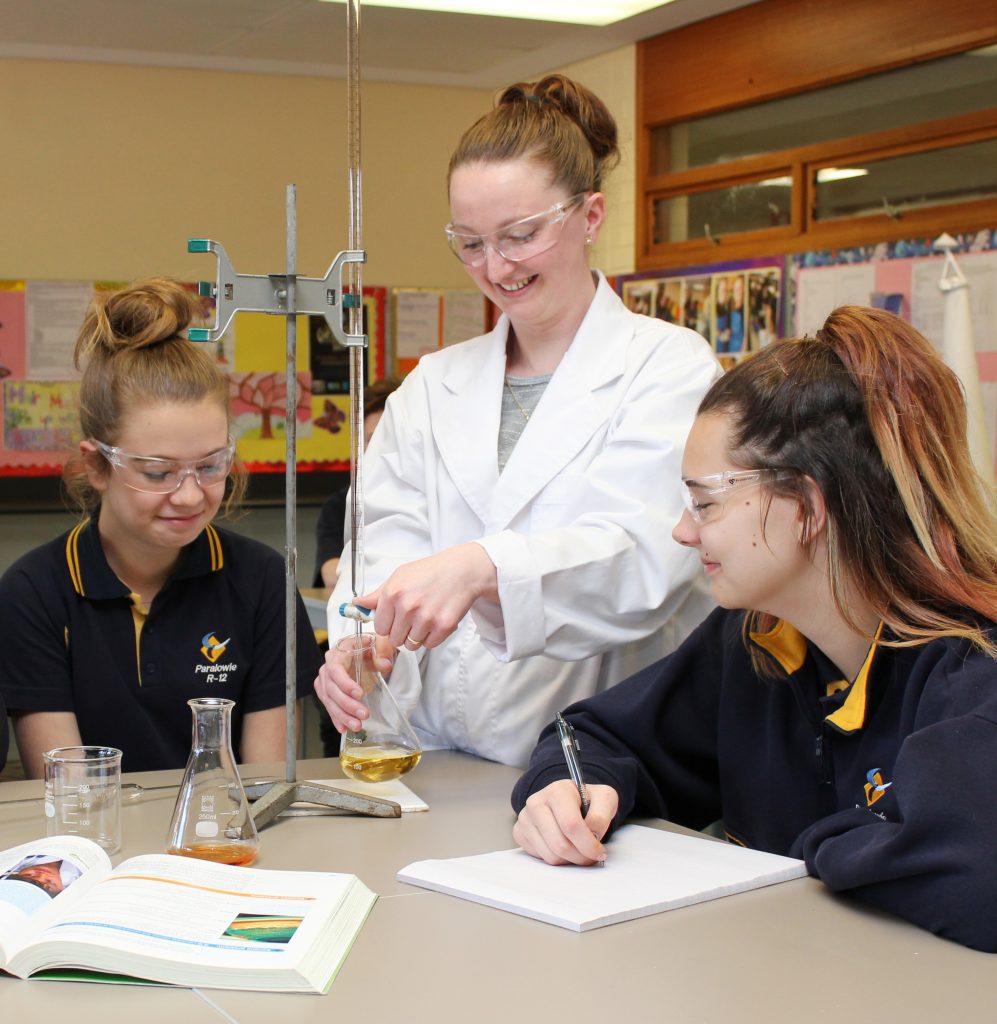
Paralowie’s Equity Agenda: Achievement for All
School context statement (2018)
Paralowie School is a large Reception to Year 12 school of 1414 students, in the northern suburbs of Adelaide. Our school is particularly diverse and complex with a large percentage of our community experiencing economic hardship. The high proportion of School Card holders (approximately 45%) indicates the socio-economic complexities of our school. This is compounded by high rates of unemployment and transience. The students at Paralowie are representative of the wide range of cultures that make up our community. The school is a category 2 index of educational disadvantage.
Elsewhere the context statement refers to the large number of Aboriginal students (143 FTE) and the number of FLO students (115). The size of the secondary component of the school is approximately 710 students.
Paralowie (R-12) displays the multi-faceted and comprehensive approach to tackling educational disadvantage that public schools serving disadvantaged communities typically need to adopt. Paralowie’s efforts also point to the inherent complexities that characterise disadvantaged communities. All schools face some form and degree of educational disadvantage and all schools work to promote equity, but the whole-school approach to educational disadvantage in a large, metropolitan school that faces a concentration of such disadvantage warrants closer attention.
Paralowie’s Equity agenda can be described in a series of principles:
1. Quality education is the core function of the school
At the head of Paralowie’s educational ethos is the commitment to quality education as the core function of the school.
Implicit in the quest for quality education are the related attributes of quality teaching, the setting and realisation of high level student achievement targets, the close monitoring of performance and the application of intervention strategies.
For Paralowie, the significance of placing the pursuit of quality education above everything else is twofold. First, it focuses attention on the school as a school and not some form of social welfare institution which, because of the acute challenges it faces, can offer only a modified education program and has to settle for lower level outcomes. This is a case of ‘qualified’ as opposed to ‘quality’ education outcomes. Second it makes the pursuit of quality education the driver of all that happens in the school, including the multiplicity of strategies that the school needs to apply to meet the social and educational needs of all its students and thereby improve their chances of success. Paralowie’s success in this area is demonstrated by school results that, for example, show that 100% of Year 12 students with the potential to achieve SACE at the start of 2017, did successfully achieve it at the end of the year. At the same time there was a general overall lift in terms of the grade bands.
Not surprisingly, Quality is another of the 6 listed characteristics of public education :
The relentless pursuit of the highest quality education for all is a central tenet of public education in South Australia. This includes quality teaching, leadership, curriculum, resources, relationships and infrastructure – all of which must be of the highest standard to achieve and maintain educational excellence.
2. The school works to set students for success
Students – and their families – from disadvantaged communities can take from their lived experience of disadvantage a diminished sense of self-worth and self-belief. They can even interpret the disadvantage, dysfunction and distress they experience as proof of inherent failure and weakness; and thus the cycle of disadvantage is reproduced. It is critically important that the school plays a significant role in building the students’ confidence, sense of self-worth, resilience and a whole set of social skills or ‘capabilities’ that will support their growth, not just as students but as future members of society.
Again, as the Statement on Public Education states:
High quality public schools provide young people with the opportunity to reach their full potential, and the capabilities to live full, productive and contributing lives as citizens, workers and community members.
At Paralowie, one critically important plank in the deliberate intention to set students up for both present and future success has been the Positive Education program that has been embedded in the school over the last few years. [For more detail on Positive Education see an earlier Post: Positive Education at Mount Barker] The school has found the approach to be highly effective. There is an obvious crossover between, on the hand, the focus, in programs such as Positive Education, on the student as a growing person/emerging adult and, on the other, the core school focus on the student as a student. Clearly, success as a student helps young people to define themselves positively. Equally, the very skill set that a young person picks up in programs like Positive Education makes them more effective students. Most importantly, Paralowie places stress on student leadership and student voice. The concentration of disadvantage in particular communities often results in people living in such communities having either a diminished sense of their civic power or in fact they do experience the hard reality of marginalised political influence.
The following note from the Statement on Public Education on the characteristic of Democracy applies strongly in schools such as Paralowie:
Education is one of the major vehicles for the development of capabilities for active participation in civic life. Public schools seek to exemplify and practise democracy at all levels by creating structures and processes that give an authentic voice to all in the school community.
There is a comprehensive Sports program at the school with competition at local,zone and state levels. The curriculum also offers specialist sports classes in the middle school. Paralowie is one of the SA schools involved in the national annual Volleyball completion.
3. The school builds a strong relationship with the community
Approximately 25% of students in the school have a language background other than English and this number is increasing. The following communities are represented in the school cohort: Vietnamese, Khmer, Chinese, Sudanese, Afghani, Bhutanese and Indian. There are also concentrations of students from earlier migration periods, e.g. Italian. The school sees the rich cultural diversity of its student population as both a strength and an intrinsic feature of its character. It understands the dynamic whereby strong, positive relationships between the school and its community, whatever its cultural make-up, increases educational performance in the school.
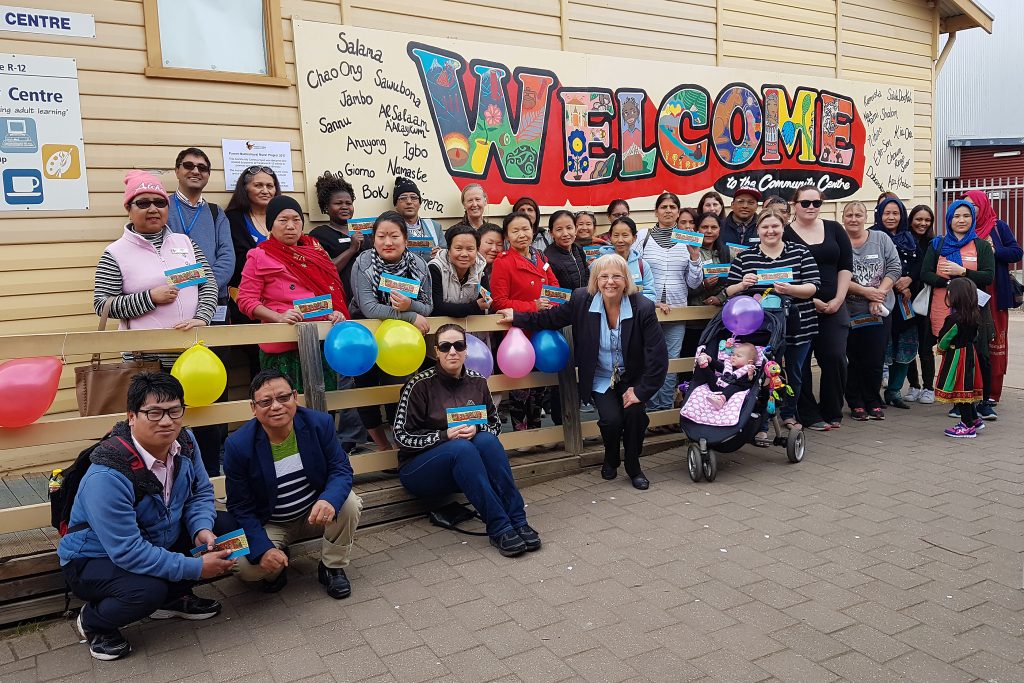
In addition to the conventional programs such as Multicultural Week and Harmony Day, the school uses its Community Learning Centre as a means of welcoming and supporting parents from the local community. Different parent groups can use the facility to meet regularly and the school runs specific parent participation programs. Parents are made to feel welcome and meet together informally. English language and computing programs for parents are in demand. There are opportunities to learn more about Australian culture. The Community Learning Centre also provides an adult learning program and parents can enrol in SACE via one of the school’s VET programs (Health, Cert 3). Adult students in this course offer the mainstream students in the class mature insights and experience; and for the adults themselves such a course offers a supported and high value pathway back to education and training. Often, the parents involved have not had positive experiences in previous schooling.
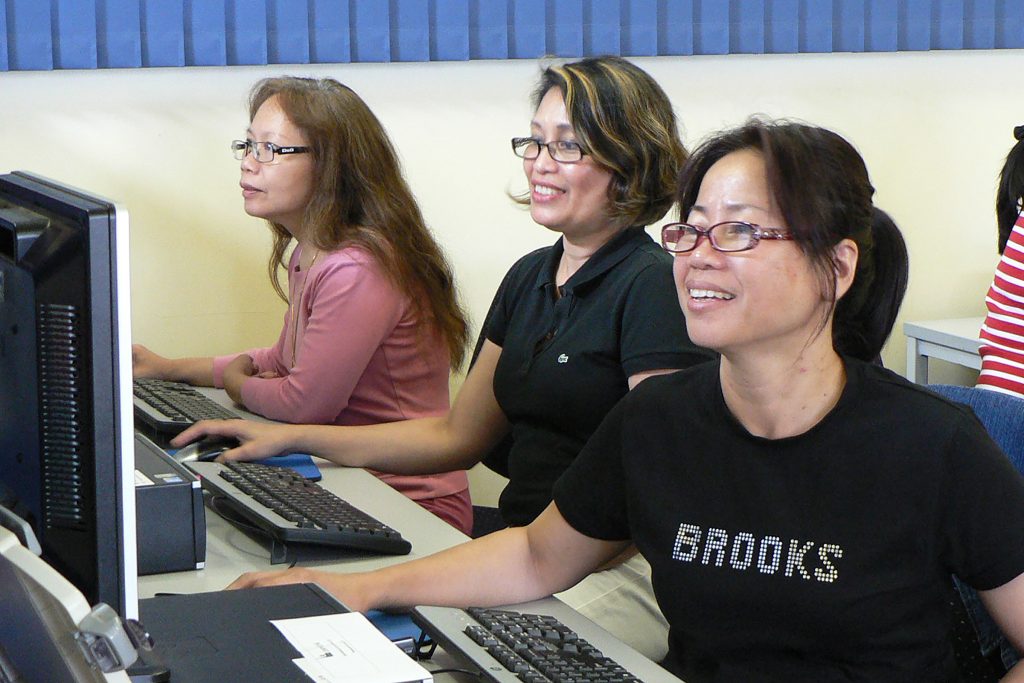
The school encourages parent participation, particularly at the secondary level where the opportunities for parent involvement typically reduce. As well, in an era when the status and existence of social and political institutions generally have both declined, the school acts as a critically important and readily accessible social asset for its community. It serves the same function when many adults and youth in the community experience limited opportunities to belong to community groups and people can experience the sense of vulnerability or diminished personal power and authority. As parental engagement grows, there is a corresponding benefit in terms of educational outcomes. The Statement on Public Education touches on this point in relation to the characteristic of Democracy:
Since parental engagement is a significant factor affecting learning outcomes, public schools ensure that all parents have a voice, including the most economically and socially marginalised.
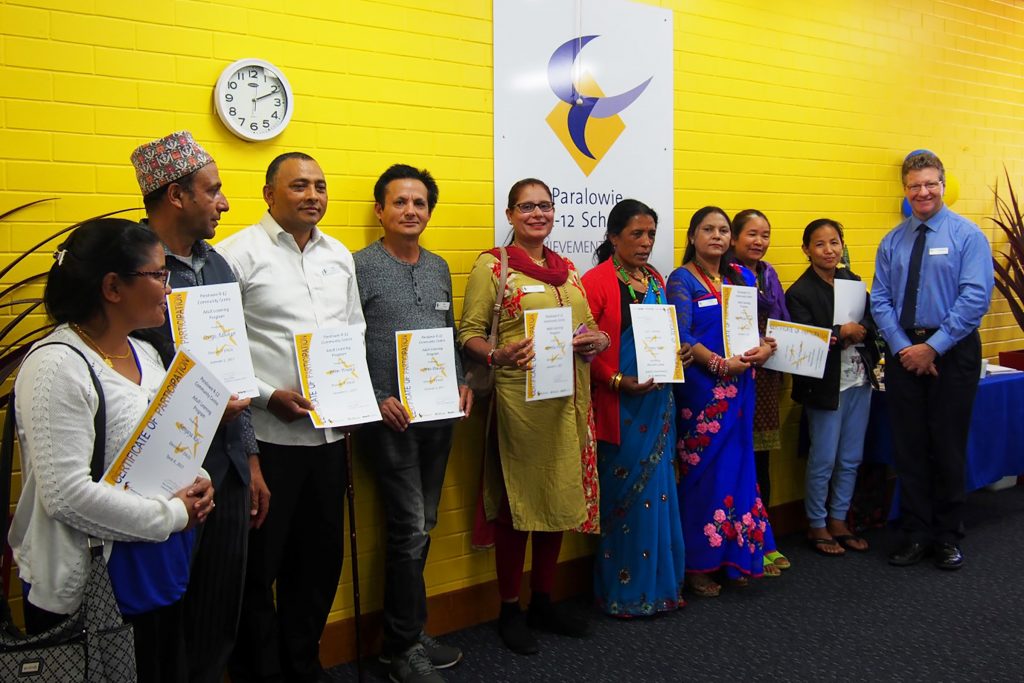
Paralowie has one the largest Aboriginal Education programs in the State, with approximately 150 students involved. The school has taken major steps and exercised considerable initiative in building the Ab Ed program both in size and quality. In particular, its efforts to set up a South Australian Aboriginal Sports Training Academy (SAASTA) have proved very successful. Aboriginal language has been another focus. The school liaises with other external Aboriginal support programs and essential services providers to build support for students. In addition to the curriculum/programs focus, the school has also sought to build positive relations with the local Aboriginal community, particularly the Elders.

4. The school provides an extended and personalised curriculum
The curriculum challenges facing a school that serves a disadvantaged community are particularly testing. There is always the tension between extending the curriculum to cater for the greatest range of educational needs and, at the same time, maintaining the quality of each single component of the school’s total curriculum package. One example of this challenge is the need to maintain a viable ‘academic’ curriculum – one that acts as a prerequisite for university – even where enrolments in the individual subjects are low. An example of the innovative approach required to meet such curriculum needs involves the arrangement whereby, currently, Year 12 students at Paralowie studying Physics, Chemistry and Specialist Mathematics undertake their studies at UniSA Mawson Lakes campus and tutorials are held back at the school. There is also the need to provide a wide range of VET offerings while at the same time ensuring that all students can access the range of subjects that will enable their success in SACE. Nor is the necessary balance ever simple because within each discrete curriculum component there are further issues. For example, in the VET component there are questions about which specific VET courses are to be offered and at what level and via which means of delivery. Currently the school-based VET courses cover Cert 3 Health Services Assistance, Cert 2 and 3 Hospitality and Cert 1 Construction (Plumbing). There are also many regional VET courses offered in partnership with other schools and RTO providers in the Northern suburbs.
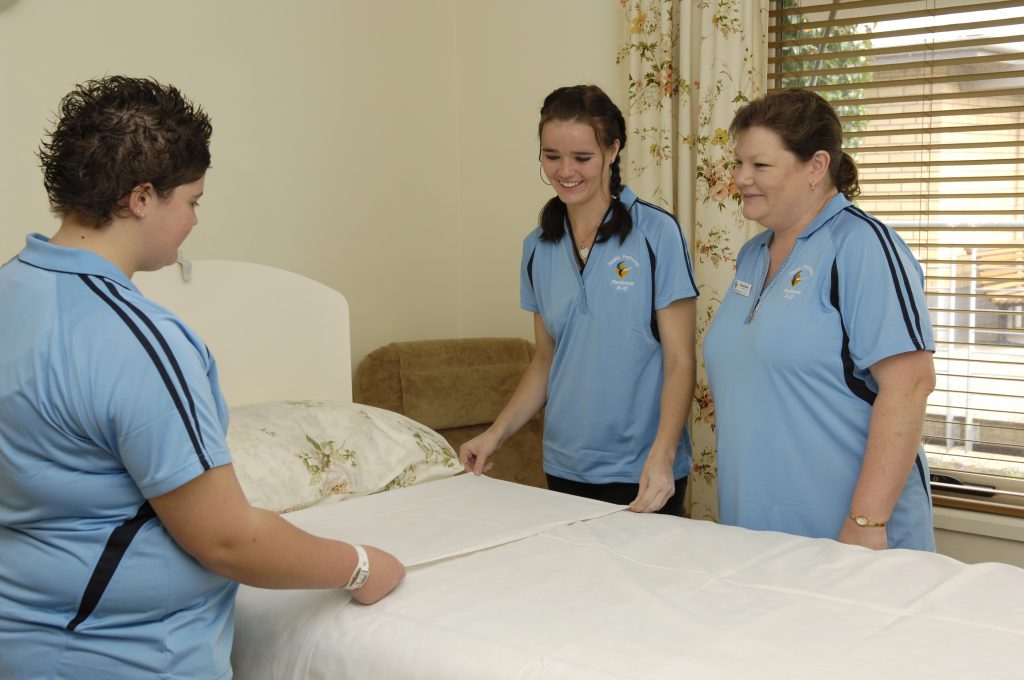
Flexible Learning Option (FLO) is another component in the overall picture of the school’s curriculum. FLO students are those … who have multiple complexities in their lives that impact upon their successful engagement with school. Paralowie has 115 students involved in the program [the total for the Sate is approximately 5,000 students] and these students may study on site or off site with other agencies and providers. Programs for FLO students are highly individualised and the student’s overall success relies to a great degree on the professional skill of those in the school coordinating the program. The school has in fact reduced its FLO numbers and applied a more rigorous selection process so that it is a genuine pathway – to employment, accredited training/apprenticeship or SACE – for those who really need it – for example, students with mental health issues or those in the juvenile justice sector.
5. The school provides underpinning support programs for both the student as a student and the student as a young person living in a disadvantaged community
Targeted support for the individual student – within a specific curriculum or program or, more generally, in an area of essential skill development, e.g. literacy – is an acute demand in schools serving disadvantaged communities. Students with limited English language skills need targeted help, as do those identified by the likes of NAPLAN or some other form of internal school testing. Similarly, students in danger of not attending school, or those with poor attendance patterns, need attention and support. Students with disabilities – approx 11% of the Paralowie school population – need support in and out of class.
At the same time, support is also required for capable and high achieving students. This is particularly the case in disadvantaged communities where the level of eduction capital – parents who have completed Year 12, parents who have completed tertiary education, homes that have educational resources, e.g. computers, internet etc – across the community is likely to be low. Paralowie offers programs such Children’s University and Tournament of the Minds. There are also opportunities for choir and debating. There are more specialised programs such as the Girls STEM Club.
There is another level of support which is designed to provide the students with leadership opportunities. These programs are designed to reinforce Student Voice across the school and also Positive Education. An example is the Youth Opportunities’s Personal Leadership program. There are also Youth Leadership Seminars as well as a Peer Tutoring program. Mentoring is used across the whole school, primary and secondary.
In addition to multiple strategies to support widespread intervention and support programs to assist individual students with their studies, Paralowie also offers a broad range of programs and strategies to support young people who face challenges which, in the main, lie outside the classroom but which nevertheless often have a major impact on their chance of success with their studies. The striking feature of a disadvantaged community is the extent to which the disadvantage outside the school – in the family and wider community – affects the individual student’s ability to participate and be successful in the schooling that is offered. As already argued, a school is a school and not a community service centre. However for the school serving a disadvantaged community it is simply not possible to draw arbitrary lines and restrict its services solely to education. If, in fact, it did take such a stand, the level of school failure – students not attending school, students not completing school, student not succeeding in their studies – would escalate dramatically.
One particular program which the school does have – Learning for Life – demonstrates the nature of the challenge. The Smith Family’s program – Learning for Life scholarship program – is built on several critical intentions: early intervention and long-term support; parental engagement in and support for their child’s education; parental accountability via a partnership agreement; the focus on strong educational outcomes and high expectations, regardless of the family circumstances; the use of multiple partnerships to reflect the joint responsibility for improving educational outcomes; and lastly, what The Smith Family refers to as ‘a beyond school approach’ which recognises the important non-school factors which influence educational outcomes. The Smith Family’s own research – Attendance lifts achievement: Building the evidence base to improve student outcomes. The Smith Family Research Report March 2018 – demonstrates how important it is in disadvantaged communities to go beyond the merely educational and put in place a range of additional supports – e.g. modest scholarship money for extra resources, an external support ‘coach’ and access to support programs – to compensate for the day-to-day challenges, and often also the lack of education capital, that characterise life for young people in such communities. In fact, some sense of the compound challenges that characterise life for youth in disadvantaged communities is presented in a very explicit way by The Smith Family itself. Their Learning for Life program supports nearly 40,000 students, nationally, each year. Consequently, The Smith Family are able to give a clear picture of the characteristics and circumstances of this group of students:
▪ 1 in 5 students are from Aboriginal and Torres Strait Islander backgrounds
▪ 2 in 5 student have a health or disability issue and 4 in 5 students live in a family where at least one person has a health or disability issue
▪ 3 in 4 students live in a household in which the primary carer is not in paid employment
▪ over half (56%) the students live in a family in which the primary carer has not attained a Year 12 or equivalent qualification
▪ over half the students (55%) live in single parent families and a further 1 in 20 live with grandparent/s or in a range of other guardianship arrangements
▪ 3 in 10 students live in a home where there is no computer and/or a device connected to the internet
▪ 1 in 5 students in Years 5 to 12 has attended four or more schools and 1 in 20 has been at six or more schools
Obviously, not every disadvantaged community exactly matches this breakdown. At the same time, these are the characteristics which, to varying degrees and acting in complex, interrelated ways, define the nature of the disadvantage which schools have to understand and address as they carry out their core educational function.
Another way to demonstrate the initiative the school needs to take to address issues which, while not intrinsically educational, will inevitably have a profound impact on the individual student’s ability to commit to schooling and be successful, is to look at the area of health.
Paralowie operates a Wellbeing Hub which offers a range of medical, dental and psychological services for students. Some of these are highly targeted. For example, Indigenous Reconnect is ‘specifically for Indigenous youth aged 12-18 who are experiencing conflict in their lives and may be at risk of homelessness’. It assists with counselling services, mediation, living skills, budgeting and financial advice, early intervention strategies and raising educational awareness. Another program for Indigenous youth and their families is InComPro.
The school has set up extensive supports for mental health – an increasing area of concern for the school – and, via Centacare, it offers early intervention services supporting young people aged between 12 and 18 years and their families where there is risk of emerging mental health concerns. Programs run from the school’s Wellbeing Hub include: Reconnect Mental Health (to support students and their families where there is risk of homelessness and emerging mental health concerns) School Assertive Outreach (intervention service that supports young people who are homeless or at risk of homelessness to maintain connections with education) and ASCEND (a youth suicide intervention program). The Wellbeing Hub can also offer individual professional psychology services to children, adolescents and youth via several practitioners. Where a medical referral is required, Wellbeing Hub staff can organise this via Medicare’s Better Access to Mental Health initiative.
This is not the extent of the services operated from Paralowie’s Wellbeing Hub – for example the school runs 2 breakfast programs for as many as 150 students and it operates its own version of a Young Mums’ program and can refer students to other such programs – but the overview does identify the areas where without support and intervention the individual student’s schooling and education would be severely compromised and these areas lie outside of what we have traditionally taken as the school’s core education charter. As well as providing such support in-house, the school has obviously built extensive relations, over a long period of time, with other external providers, agencies and partnership schools. This approach is further evidence of its involvement in the wider community.
Finally
In an interview, the principal (Peter McKay) highlighted several factors that he considered were critical in terms of the school’s success in serving the complex and often acute needs of the community.
He was very clear on the need to emphasise that the core purpose of the school, irrespective of the challenges faced by the community, was education. He was keen to raise the education focus even more and, in particular, he was keen for an increased emphasis in the primary years. His thinking was that students needed to move up through the years with the understanding that school was about success in education and that all could achieve.
He emphasised how important quality teaching was, not just in terms of classroom teaching but also in terms of being able to manage complex and challenging behaviour. The abilities to work with colleagues and support the school’s full program were also very important. He was aware of the fact that Paralowie was a school that always required more of its teachers. He was proud that the staff had become a stable entity and that teachers chose to come to the school and committed to staying. He described how critical it was to secure the ‘right’ person for the more sensitive positions in the school. He spoke at length of the importance of having quality leadership at every level and for every program in the school.
He considered that the services offered via the Wellbeing Hub were essential in helping students to remain focused on their education. He also pointed to other areas of need where additional professionals working from the Wellbeing Hub would be of great assistance, for example a qualified youth worker. He noted that while the school did manage to access occupational therapy support via a practicum arrangement, his preferred arrangement would be that school could additionally appoint a professional in this area. Another area of identified need was in migrant support services. He was aware of the challenges facing schools, like Paralowie, that relied heavily on their ability to access external support services via school funds and, as importantly, via Departmental staffing protocols. He certainly considered this was an area that needed urgent attention, even while he employed creative strategies to secure the services his school needed.
He was particularly concerned by what he described as a significant increase in youth mental health issues – for example, self-harm – over the past 10 years. Based on his own experience in schools he believes that if schools have the resources they can make positive differences in this area. He believes that the development of mental health issues for the individual child or young person can be closely linked to a developing pattern of school failure for the same child or young person, underlining yet again the true – and expanding – cost of school failure.
He spoke very enthusiastically of the school’s Positive Education program and noted that it had now been embedded across the school. Positive Education supports behaviour management by being pro-active on issues like racial and cultural diversity and tolerance. He himself has a strong background in this area and has received formal training in Positive Education. Similarly, his strong background in and commitment to Aboriginal Education has provided clear leadership in this area at Paralowie. He was determined to establish the Sports Academy (SAASTA) at Paralowie and ran the program for a year using school finances to prove its worth and viability. The initiative was very successful. In other ways he has been a good ‘fit’ for Paralowie. For example his background has been mainly in area and R-12 schools and he sees the R-12 school as being a powerful model for disadvantaged communities.
Overall, the principal recognises how important it is to offer – and even extend – essential support services for children and young people, as a fundamentally important strategy to enable them to achieve success at school. He also recognises the need to establish a school culture that promotes positive qualities – tolerance, respect, resilience, support … – but above everything else he maintains that the provision and pursuit of quality education, in all its forms and for all students, is the core function of the school; and in his view, the only exemplar that students should be exposed to is that at A standard.
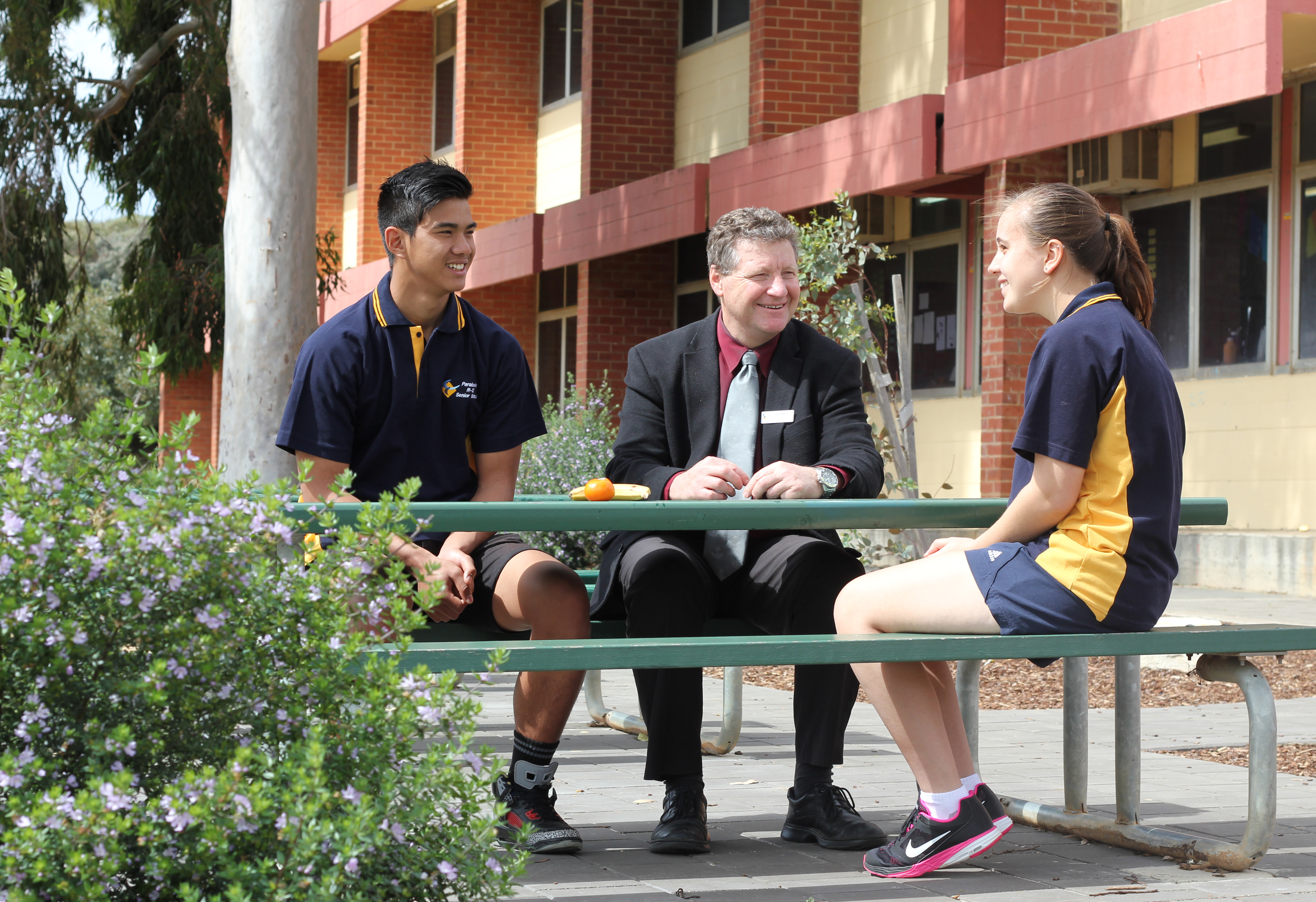
Peter McKay, Principal, Paralowie R-12 School

